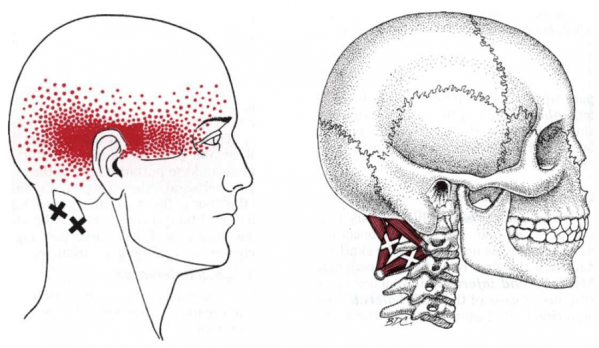Eyes on the Horizon Suboccipitals, Posture, and Headaches
If you suffer from tension headaches and migraines, you are likely aware that they can be exacerbated by tense and stiff muscles. One of the major muscle groups that can contribute to this problem are overworked suboccipitals. These are postural muscles at the base of the skull, which means that they control fine head movements and basically hold your head in the proper position on top of your neck! Because of this, they can be adversely affected by poor posture.
When we spend much of our day at the computer, we tend to develop the posture and syndrome we discussed last week: “Upper Cross Syndrome”. The tension in our suboccipitals is a part of that problem. Our heads slide forward on our necks and our shoulders and upper back become rounded. When our backs and shoulders round forward, our head must slide forward in order to keep our eyes looking to the horizon – that is how we are made to function and keep our equilibrium. This leads to overworked and tight suboccipitals and weak anterior neck muscles. All muscles involved must be treated, including the pectorals, cervical, and thoracic (neck and upper back) muscles.

The good news is that the suboccipitals are one of the areas that most clients absolutely LOVE to have treated! Regular massage therapy treatments, including trigger point release, CranioSacral techniques, and other myofascial release techniques will assist in relaxing your suboccipital muscles. Mindfulness of your posture throughout the day is also critical. This can be achieved by regularly doing a gentle chin tuck while lifting your heart and allowing your shoulder blades to slide down your back. This exercise will also gently strengthen the deep muscles on the front of your neck.
Gentle stretching can be done to release this area as well:
1.) Sit with good posture
2.) Tuck your chin down into your neck
3.) Find the 2 bumps on the back of your head and touch them with your fingers
4.) Push at that spot up towards the ceiling
5.)Hold for 30 seconds